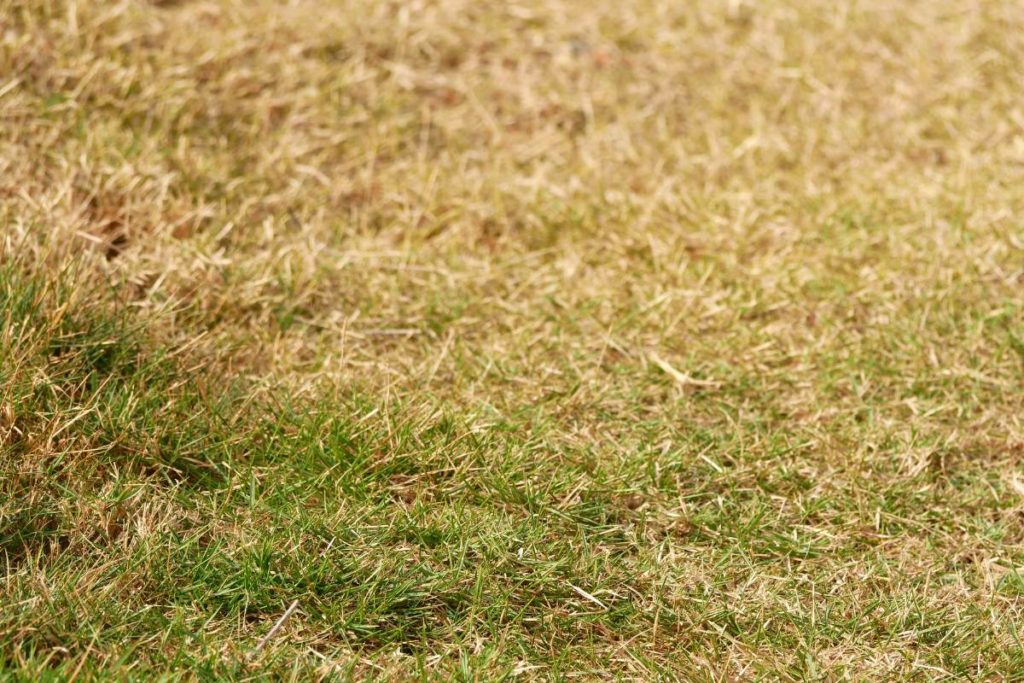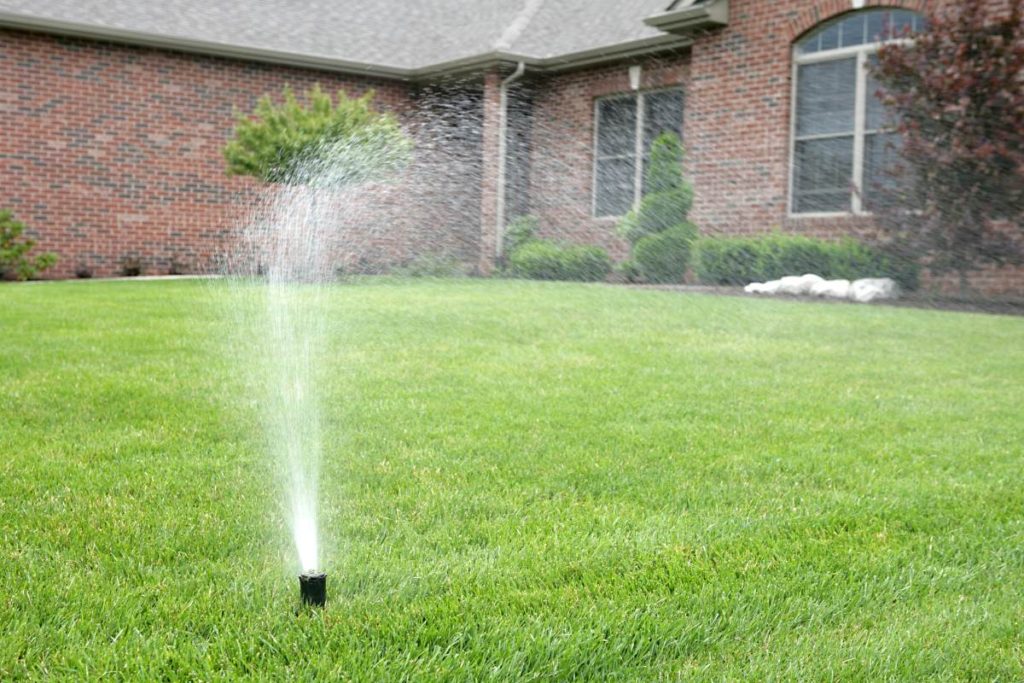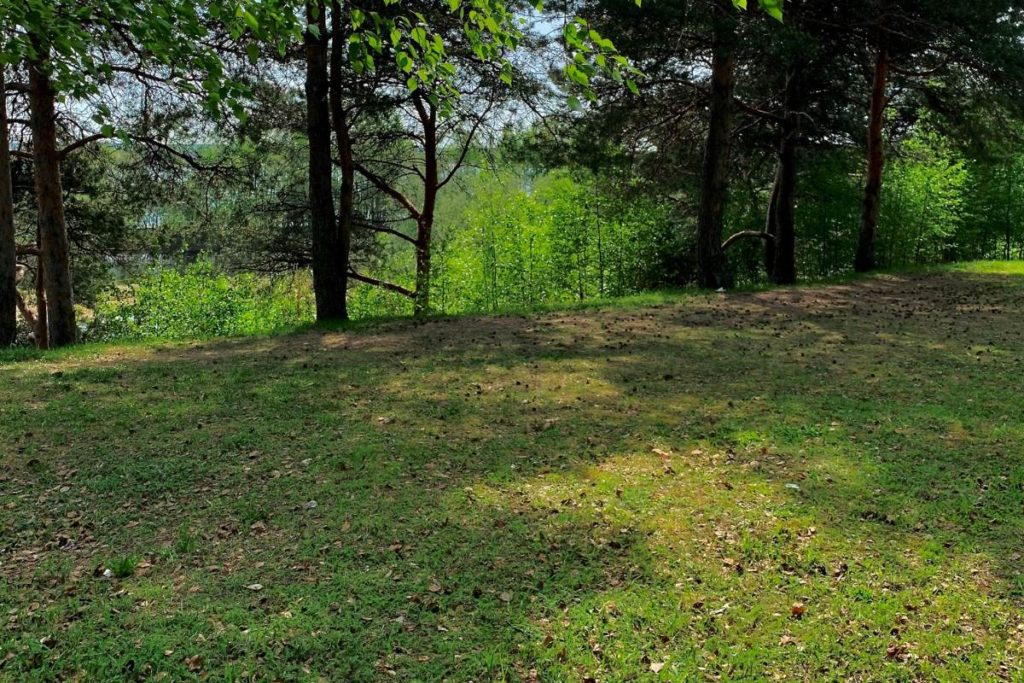By understanding the impact of scorching temperatures on your grass, you can ensure a picture-perfect, lush green yard. When the temperature is above 90 F, it is too hot to mow grass. Why? Because cutting grass during these scorching hot days can spell disaster for your beloved green oasis. You may wake up to unsightly brown patches and even witness the dreaded complete dieback. Fixing these issues will drain your time, money, and sanity.
Increased temperature from the sunlight, mostly during summers, distorts the grass growth. Mowing your lawn in such conditions creates more drought stress on the grass as they try to strive following excessive moisture loss.
How Grass Reacts When the Weather is Too Hot
Despite any high maintenance you provide for your lawn, too-hot weather impacts it negatively. The grass is subject to stress and heat stroke with the increased heat wave.
During high temperatures, grasses undergo transpiration, which enables them to release moisture on the surfaces of their leaves. It helps to lower the heat stress by cooling the lawn.
However, at extreme temperatures and lower humidity, grass would lose more moisture as the rate of transpiration increases. Without regular water replacement, it will suffer overheating and drought stress. This could discolor the grass, causing it to turn brown through much wilting.
The intensity of stress on grass depends on certain factors. Check the levels of soil moisture. Without adequate rainfall or manual watering, the severity of stress is higher.
It also helps to know choose the right type of grass for your climate. The stress is more on cold-weather grasses such as fescues, Kentucky bluegrass, perennial ryegrass, and others. But grass for warm season, like Zoysia grasses and Kikuyu have more survival potential in the summer heat.
No one likes extreme heat, no even your lawn. during hot summer months, heat creates more pressure on your lawn. The longer the heating period, the higher the wilting impact.
Check the Temperature Before You Mow Grass
Temperatures above 80 degrees F create more stress on most grasses, especially cool-season grasses, causing them to struggle. When increasing periods of higher temperatures, grass could suffer drought, wilt, and even discoloration.
Stacie Smith, the owner of the notable landscaping and property maintenance firm Smithson Exteriors, noted that temperatures above 90 degrees F are too hot for mowing grasses. At such point, grasses will struggle due to water loss from the unbearable summer sun.
Once the temperature is high when there is no rainfall, mowing your lawn brings destruction rather than maintaining them.
Signs That it Is too Hot to Mow Grass
Some common indicators will prompt you that it’s too hot to mow the lawn. These include the following:
The Color of the Grass
A healthy lawn with adequate moisture and a conducive environment gives a vibrant greenish appearance. However, a yellow or brown appearance indicates that the grass is struggling with drought due to heat waves from hot weather.

Soil Moisture Levels
When the soil is dry or cracked, it indicates excessive heat for your lawn. In such a condition, the grass struggles to survive by getting more moisture. Therefore, you must provide enough water to prevent such occurrences.
Also, you can dig a few inches into the soil or feel it to determine the moisture levels for your lawn. Dryness to touch means the soil is too dry and requires watering to preserve your lawn.
Weather Forecast
Updates from weather forecasts will help you to know when temperatures could be too high to avoid mowing.
Precautions to Mow Your Lawn in Hot Weather
If you must mow your lawn during hot weather to maintain order and as part of lawn care, you must take extra precautions to minimize possible damage.
Here are some precautions to follow while mowing during the entire summer season.
Mow When the Temperature Is Lower
You can cut the grass early morning before the sun rises or late evening if you must engage your lawn mower during hot weather. The cooler mowing temperature will help reduce moisture loss through transpiration and preserve the lawn’s greenish outlook.
Increase the Blades’ Height on Lawnmowers
Raising the height of the grass blades helps to cut less from the lawn. This leaves the grass with more parts to maintain the process of transpiration. The process will aid in reducing the stress on the grass in excessively hot temperatures.
Moreover, increasing the height of mower blades would aid the grass to grow straight and stand tall and get deeper roots in the future. The appropriate mowing height for a cool season grass should be between three to four inches.
Water Immediately After Cutting Grass
Immediate and thorough watering after mowing provides more cooling. Also, it helps in controlling wilting and reduces stress on lawns from extreme hot weather.

Additionally, you could observe regular watering since morning dew may not provide enough moisture to help the grass grow.
Shade Your Lawn
Planting trees around your lawn helps to shade vulnerable parts after cutting from excessive hot weather. Alternatively, you can use a shade cloth to protect the lawn from the sun and ensure the grass grows again.
Aerate the grass using lawn furniture or an umbrella to shade vulnerable areas to avoid heat stroke.

Mowing is always a part of maintaining a healthy lawn. However, understanding the appropriate temperature is a good step for summer heat beating and avoiding the heat wave.
Avoid mowing when the temperature reaches 90 degrees F or above, especially during summer. Also, if you must mow the lawn, maintain the given precautions to prevent the grassroots from wilting due to heat exhaustion.










